N-1sletter #3: The week in bicycle tech
Fancy commuting shoes, bargain sunglasses, TPC is back (maybe), and easy Shimano shifter overhauls.
Congratulations, y’all, you made it to another Friday. This is what’s coming to you in this week’s free N-1sletter (haven’t settled on that name, by the way, so keep the suggestions coming):
Former pro road racer David Millar has fascinating handwriting.
The Pro’s Closet rises from the ashes.
An unexpected new product from Cane Creek.
NoTubes teams up with Daysaver to plug your tires.
Yamaha bites the dust.
Goodr Astro G sunglass review.
The easy way to overhaul old Shimano STI Dual Control shifters.
I’ve spent the better part of the last two decades thinking obsessively about bikes and bicycle-related gear: how well it all works, how it’s designed, the engineering principles behind it all, weights, measures, aesthetics, you name it. In recent years, however, I’ve been thinking more about the people behind all of it: their personalities, their likes and dislikes, the experiences they bring to the table that might influence the products they bring to market.
One of those people is Scottish former pro road racer David Millar, who retired in 2014 and shortly thereafter founded “cycling lifestyle brand” CHPT3, in reference to his belief that every person has three chapters in their life (“family, work, and play”), as well as what he considers to now be the third chapter of his cycling career. CHPT3 has primarily been a cycling apparel company, collaborating with Castelli on a wide range of men’s and women’s clothing for both on and off the bike, but it has also been a design house of sorts, collaborating on a number of other products with brands such as Factor, Brompton, Brooks, Fizik, and POC.
Most recently, Millar decided to launch an “urban cycling shoe” called the Transit, which is said to combine “the power of a pro cycling shoe [with] the comfort of a luxury sneaker.”
Millar sent me a pair a couple of months ago, and I’ve been pretty happy with them overall.
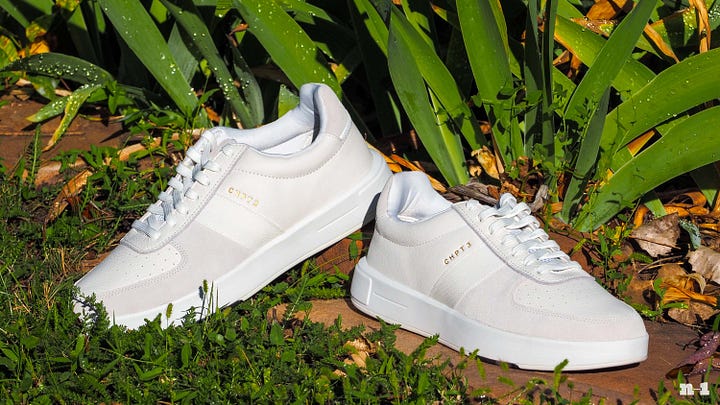
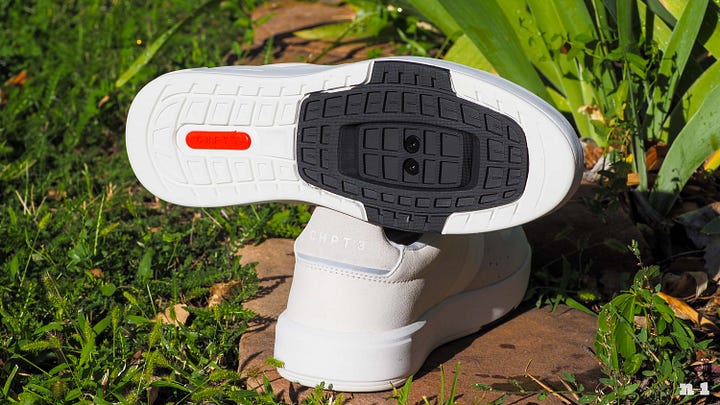
There’s a rigid plate embedded inside the midsole that allows you to attach two-bolt cleats, or (as I did) you can just leave the cover plate in plate for use with flat pedals. Either way, it effectively minimizes flex immediately around the pedal body for a more efficient feel than a typical street shoe. That plate is intentionally short so as to mimic a street shoe’s walkability, though, and combines with an unusually (for a commuting shoe) thick and cushy EVA midsole so you don’t have to clomp around like an idiot while you’re at work all day.
The classic styling looks good to my eye, although the white color I chose is hard to keep clean (I guess I should have requested black), They’re also appreciably wider and more comfortable than my usual Stan Smiths (which is perhaps a bit ironic given the Transits were designed by former Adidas creative director James Cannes).
Performance-wise, they’re legitimately nicer to pedal in than regular street shoes given their increased support, and while I can’t say they’re just as comfortable to stroll around in as a street shoe (despite the shorter length, I could still feel the micro plate under the balls of my feet while walking), they’re agreeable enough that I’ve frequently opted to wear them on days when I know I’m only going to be on foot.
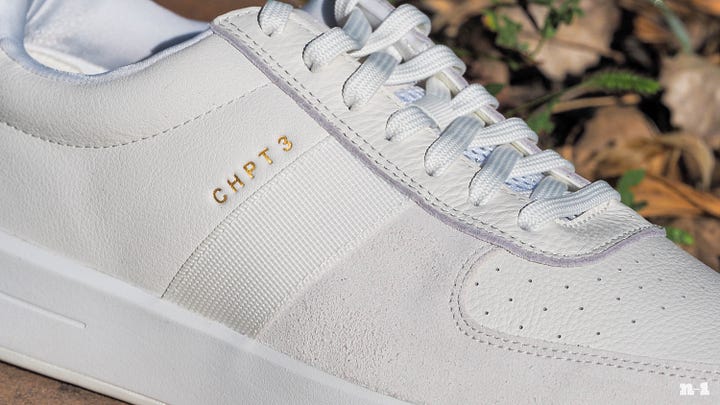
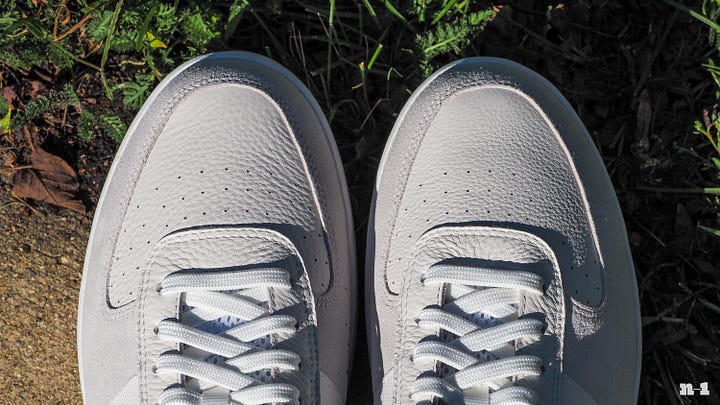
I’m not sure how big the market is for dedicated commuting shoes that cost US$235 / £195 / €225, but seeing as how I’ve worked from home since 2007, I’m admittedly not exactly the target market. For that price, though, at least CHPT3 is using real leather.
Ok, but back to what I was saying earlier about the people behind the product.
Included with my box of shoes was a note that Millar had written himself, and it was impossible for me not to be struck by his penmanship. I mean, seriously, look at this!
Graphologists contend that there’s a lot to be learned from someone’s handwriting, with the letter size, angularity, curvatures, line thicknesses, and other various details supposedly offering insights into one’s personality. Is it a legitimate practice? Heck if I know, but it seems like something can be inferred by someone’s penmanship.
In Millar’s case, I certainly have no training in handwriting analysis so I’d be remiss in offering any sort of conclusion here. But if there are any graphologists out there reading this right now, I’d love to hear your thoughts because I’m absolutely fascinated by the note and can’t help but think it tells us something.
In the news
Almost a month to the day after it shut down its operations, US-based mega-retailer The Pro’s Closet has risen from the ashes – sort of. Maybe.
Private investment firm Elshair Companies is looking to resurrect TPC, purchasing the brand’s intellectual property and digital assets, and also re-hiring some of the old staff, including long-time employees Justin England and JP Gage, who will serve as the new Chief Revenue Officer and Chief Operating Officer, respectively. In a notable shift, TPC 2.0 plans to focus on its original core business model: buying, refurbishing, certifying, and then reselling used bikes and gear.
At least on paper, this sounds like a good idea. The used market in cycling has always been incredibly fragmented, and the industry could stand to benefit from some sort of centralized marketplace, particularly if someone (maybe TPC?) could establish a pre-owned certification process that people can really believe in.
Might TPC 2.0 be able to regain its footage and continue on the upward trajectory it left behind a few years ago? That might be nice, but the company has quite the uphill battle ahead of it. While it’s only been a few weeks since the first iteration of TPC announced its demise, several other brands have already rushed in to fill the void. And although Elshair Companies may have managed to buy up some key virtual aspects of the brand and bring back some of the people that helped to make it what it was, let’s not forget that TPC’s physical assets were just sold off at auction – never mind the fact that some of that old staff may also have helped contribute to its downward slide.
On the upside, this at least means TPC 2.0 isn’t going to be hamstrung by the original company’s ludicrously oversized warehouse space (and its hefty monthly lease payment) or weighed down by a bunch of inventory it can’t move. But that also means it’s starting from basically nothing: as in, no office or warehouse space, no shelving or other infrastructure, no tools or equipment, and at least for now, nothing to sell – and let’s not ignore the fact that in keeping the name, TPC 2.0 is carrying forth not only the good aspects of the old TPC, but the less favorable ones, too.
We’ll see where this goes.
Cane Creek could be a case study in how a smaller brand can continue to carve out a niche for itself in an increasingly competitive industry. Welded titanium cranks? An ultralight inverted carbon fiber gravel suspension fork? A rear shock that uses both a coil spring and an air spring? Elastomer suspension stems and seatposts? While there is certainly some overlap with other what other brands offer, by and large Cane Creek has done a good job shooting the gap by intentionally being just different enough.
And so I was a little surprised to see they’d launched what seemed to be a fairly ordinary forged aluminum stem called the GXC. The sort of rounded and ovalized hexagonal extension reminds me of the Zipp Service Course, it’s light but not outrageously so, and the tidy four-bolt faceplate is the same one Cane Creek uses on its eeSilk suspension stem. So what makes it special? In other words, why would Cane Creek bother with such a thing?
As is often the case, someone inside the company needed something they couldn’t find elsewhere.
“Basically Brent [Graves, Cane Creek’s CEO] got fed up with the poor offering of stems for his new gravel and XC builds,” Cane Creek product marketing manager Will Hart explained to me. “He wanted something premium that looked the part and was light. Lots of stems these days are using a blasted finish that looks cheap. We do strive to bring something new and beneficial to the rider, but in this case it was just a matter of filling a void. It’s not a new strategy or direction, but we try to be open to all opportunities.”
Indeed, what sets the GXC apart is its highly polished surface finish (in both silver and black) and its impressively reasonable price: just US$70. Cane Creek is offering them in bread-and-butter lengths from 60-100 mm, and the claimed weights are an impressive 96-120 g, depending on length. Hart says more lengths might be added depending on market demand.
So nope, it’s not the absolute lightest, it’s not the stiffest, it’s not wind tunnel-tested, and it sure as heck isn’t designed for headset cable routing. But it’s pretty light, it’s elegantly styled, it’s reasonably priced, it presumably works just fine, and it’s available in sizes that most people actually use.
Sometimes it’s perfectly ok to celebrate the simple things.
We’re in a bit of a golden age when it comes to on-bike tools. More frames are coming out with dedicated mounts, and there are more options for tools from more brands than ever – and let’s not even get into built-in frame storage. We’re now even seeing different brands collaborating to expand specific ecosystems.
One of those partnerships is Stan’s NoTubes and Daysaver, who have teamed up for an interesting tubeless plug kit. The new NoTubes Incredible DART (Dual Action Repair for Tubeless) tool features the same flower-shaped plugs as the original DART tool, which the company claims to create both a mechanical and chemical plug (when used with Stan’s sealant) for a quicker and more reliable repair. While the plugs themselves are novel, the tool itself is pretty forgettable with its somewhat awkward and bulky shape, and plastic construction.
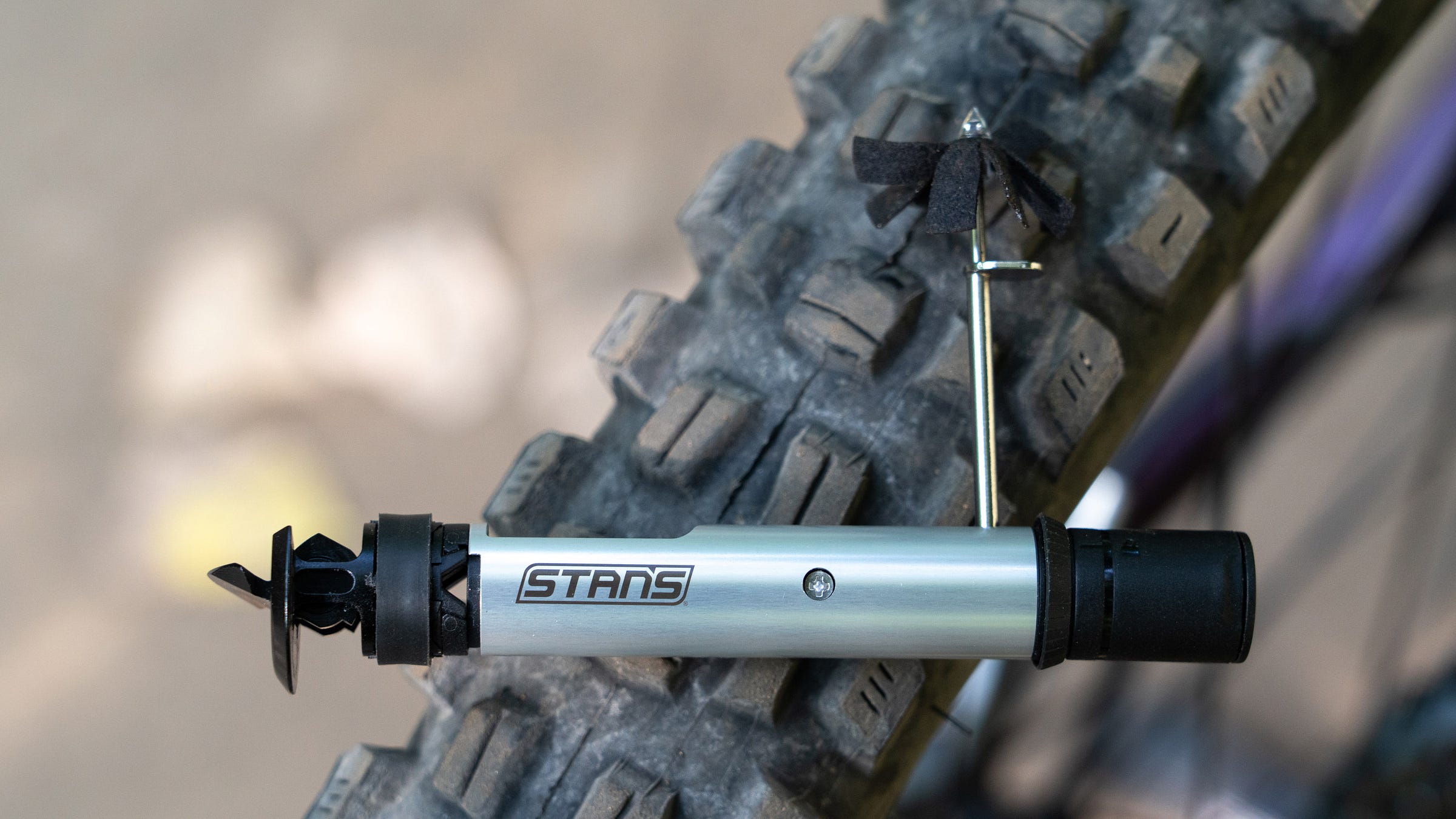
The Incredible DART tool looks to solve that by adopting Daysaver’s so-called Incredible cylindrical form factor, which tucks securely neatly into the end of a mountain bike handlebar or plugs directly inside Daysaver’s upcoming new mini-pump. In contrast to the original DART tool’s plastic construction, the Incredible version features an sturdier-looking aluminum body and a stainless steel insertion pin that automatically flips out on a spring-loaded hinge when called into duty. A storage compartment built into one end of the Incredible DART tool holds two additional spare plugs.
As intriguing as the Incredible DART sounds, the US$72 retail price – nearly triple that of the standard DART tool – is tough to swallow, and that doesn’t include the Daysaver mini-pump (which starts at US$83) or even the quick-release end cap required for handlebar mounting if you want to go that route (US$34). Still, I like where this trend is going.
Yamaha has pulled the plug on its e-bike business after failing to gain traction (sorry, no pun intended) since the range was first introduced six years ago.
“We want to thank you for your partnership and for your business in purchasing and retailing Yamaha eBikes, and for proudly representing the Yamaha brand,” read a letter sent to dealers last week. “However, as you know the combination of a post-COVID oversupply within the entire bicycle industry, coupled with a significant softening of the market, has resulted in a particularly challenging business environment where it is extremely difficult to achieve a sustainable business model. Given these market conditions, we regret to inform you that Yamaha has made the difficult decision to withdraw from the U.S. eBike business and cease wholesaling units effective the end of this year.”
It’s important to note that this announcement only affect Yamaha’s own brand of e-bikes, not its standing arrangement as an OEM supplier for other brands. Giant, for example, uses custom-tweaked Yamaha motors re-badged under its own SyncDrive Pro label, and says its range is unaffected by this development. Warranty support is supposedly unaffected, too, and Yamaha says parts availability and service will carry on for at least a few more years.
TL;DR review: Goodr Astro G sunglasses
Value-priced and fun-focused eyewear brand Goodr recently expanded its range of cycling-centric sunglasses, with the new Bolt G, Astro G, and Bug G joining the Wrap G that debuted in 2022. The Astro G is a full-sized model with a shape not unlike Oakley’s popular Sutro, while the Bolt G is a fairly conventional-looking half-frame model with a single shield-type lens. The Bug G is far and away the most controversial of the new trio, with a bug-eyed (hence the name) dual-lens format that kind of reminds me of swim goggles.
As is standard fare for Goodr, all three feature polarized lenses, rubberized frames with non-slip nosepieces and temples (nosepieces on the Bolt G and Astro G are also adjustable), lots of color options (with whimsical names like Ready the Confetti Cannon), a one-year warranty, and a super attainable US$35 retail price.
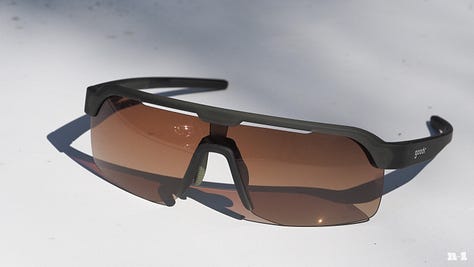
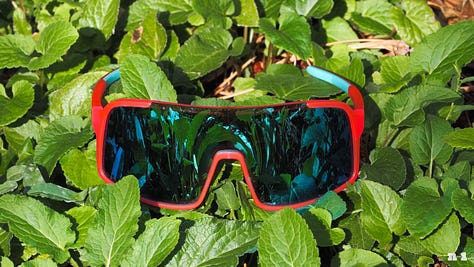
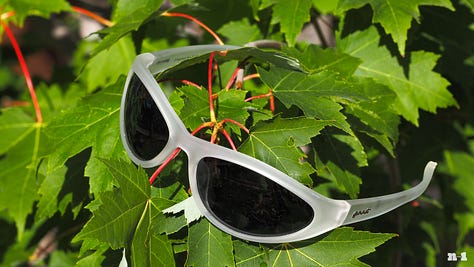
Ok, but are they actually any good?
The Astro G is the most cycling-specific of the trio, so I’ll focus on those here.
The fit is somewhat narrow, but I’d expect that the highly flexible frame should pretty easily accommodate those with wider heads. The adjustable nosepiece is particularly nice for riders with lower bridges and flatter faces, and the frame’s modest curvature helps in that respect, too. Overall comfort is excellent, as is the amount of coverage and wind protection; even on fast descents, my eyes never watered. Ventilation on slower climbs and hotter days could be a little better, but balancing those two traits is always an exercise in compromise.
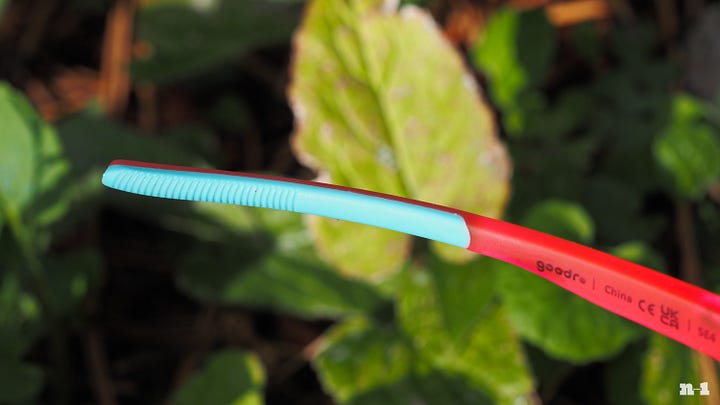
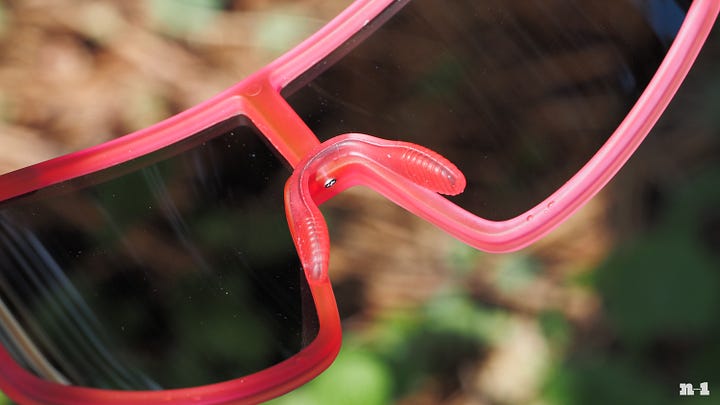
In terms of optical quality, the Astro G is better than you might expect given the price point. There’s more distortion than what I typically find from premium brands like Oakley, Smith Optics, and Roka, but I suspect that most users won’t notice much. What might be a little more bothersome is the lens tint, which I’m not sure is intended to be graded from top to bottom, but ends up that way purely due to the angle at which you’re looking through them given the cylindrical design. Straight on, there’s a hint of brown to enhance contrast, but above and below when you’re looking through the lens at more of an angle, the tint is more of a neutral grey. I got used to it while riding, but can’t say I ever fell in love with it.
The first pair Goodr sent me also had a lens that was visibly distorted around the nosepiece, as if the cuts of the lens and frame weren’t quite perfectly matched. The replacement pair was thankfully much better, but the lens is still noticeably thinner and easier to bend than what I typically find from nicer sunglasses. On the plus side, Goodr seems to be doing a better job with its lens coatings these days, as these were more resistant to scratching than I’ve seen in the past.
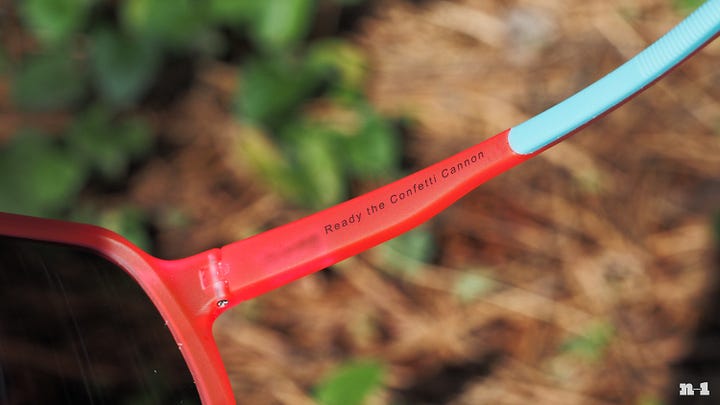
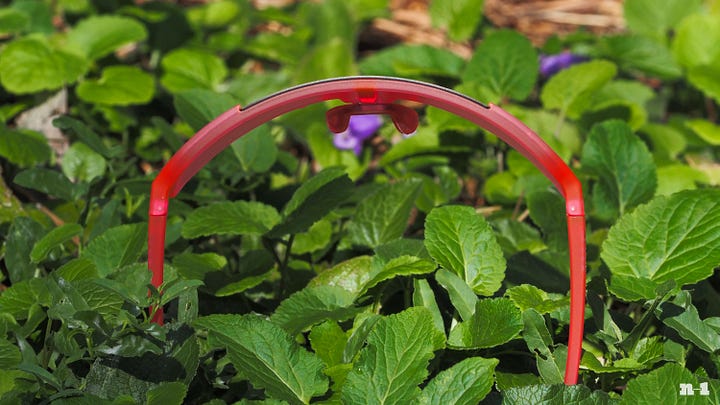
Overall, I’d say there’s definitely some element to the old saying, “you get what you pay for.” The lenses are noticeably thin, the tints are pretty basic, the optical quality just isn’t on par with the bigger and fancier brands, and they just feel kind of chintzy overall. But they get the job done reasonably well, the bold styling pushes the envelope more than what a lot of major labels are producing these days, and at just US$35, the value proposition is hard to beat.
Tech tip of the week
Shimano’s Dual Control integrated mechanical road brake/shift levers have been around for nearly 35 years, and while I don’t have an exact number to share, it’s safe to say an awful lot of these things have been produced in that time. Moreover, a lot of them are still in use, even if many of them aren’t working as well as they used to.
The most common symptom afflicting these is an upshift paddle that just stops doing what it’s supposed to. In other words, you can pull cable and shift to easier gears by swinging the entire brake lever inward, but you can’t release cable and shift to harder gears at all. That lever will still move, but it doesn’t seem to do anything.
Whatever you do, do not take the shifter apart. The fix literally takes less than ten minutes, and requires no disassembly whatsoever. Heck, you don’t even have to remove the cable (although if you haven’t done that in a few seasons, now would be a good time).
Internally, Dual Control shifters are packed with ratchets, pawls, pivots, and springs, all of which need to move freely for the mechanism to work as intended. Over time, the factory grease thickens, and the light-duty springs that Shimano has historically favored just aren’t strong enough to overcome the higher viscosity. At that point, the pawls no longer engage, and the ratchet ring can no longer release cable tension.
The repair process is exceedingly simple: you just need to flush out the old grease and then re-lubricate the mechanism – and again, there’s no disassembly required. Just grab an aerosol can of automotive disc brake cleaner, White Lightning Clean Streak, or a similarly aggressive spray degreaser, and blast it directly into the shifter mechanism for a few seconds with the little straw that usually comes with those cans (some mechanics I know, such as Jim Potter at Vecchio’s Bicicletteria here in Boulder, Colorado, prefer WD-40). Repeat as necessary until the old grease is purged, the mechanism moves freely, and the shifter starts working again.
If you have access to one, it wouldn’t hurt to then blow the solvent out of the shifter with an air gun. Otherwise, you can use a hair dryer or even just wait an hour or so for the solvent to evaporate. Lastly, it’s time to re-lubricate the mechanism. Opinions on this differ depending on the mechanic you speak to as far as exactly which lubricant works best.
I’ve always preferred to use a slightly heavier oil such as Phil Wood Tenacious, applying a few drops from the bottom (with the bike oriented upside-down) and letting it soak in. That stuff has been my preference because it’s less likely to drip back out than thinner-viscosity oils, and also less likely to gum up the works again than any grease. But again, it depends on who you talk to (Potter likes Tri-Flow), and any of the three will deliver better results than what you started with.
After the fresh lubricant is applied, use a dry rag to wipe up any excess lube, and that’s it! You’re all done, and your shifter should be working as good as new.
Ok, that’s it for this week’s n-1 tech newsletter. As always, this weekly tech round-up will remain free to everyone, but the other content is only available in full to paid subscribers. Like what you see here? Please tell a friend. Don’t like it? Tell me. And again, I’m still on the fence about names for this thing, so if you’ve got any good suggestions, let me know.
I’m off to upstate New York early next week to visit the folks at No.22 Bicycle Company, but should have another post published Tuesday morning as usual. Have a good weekend.
James





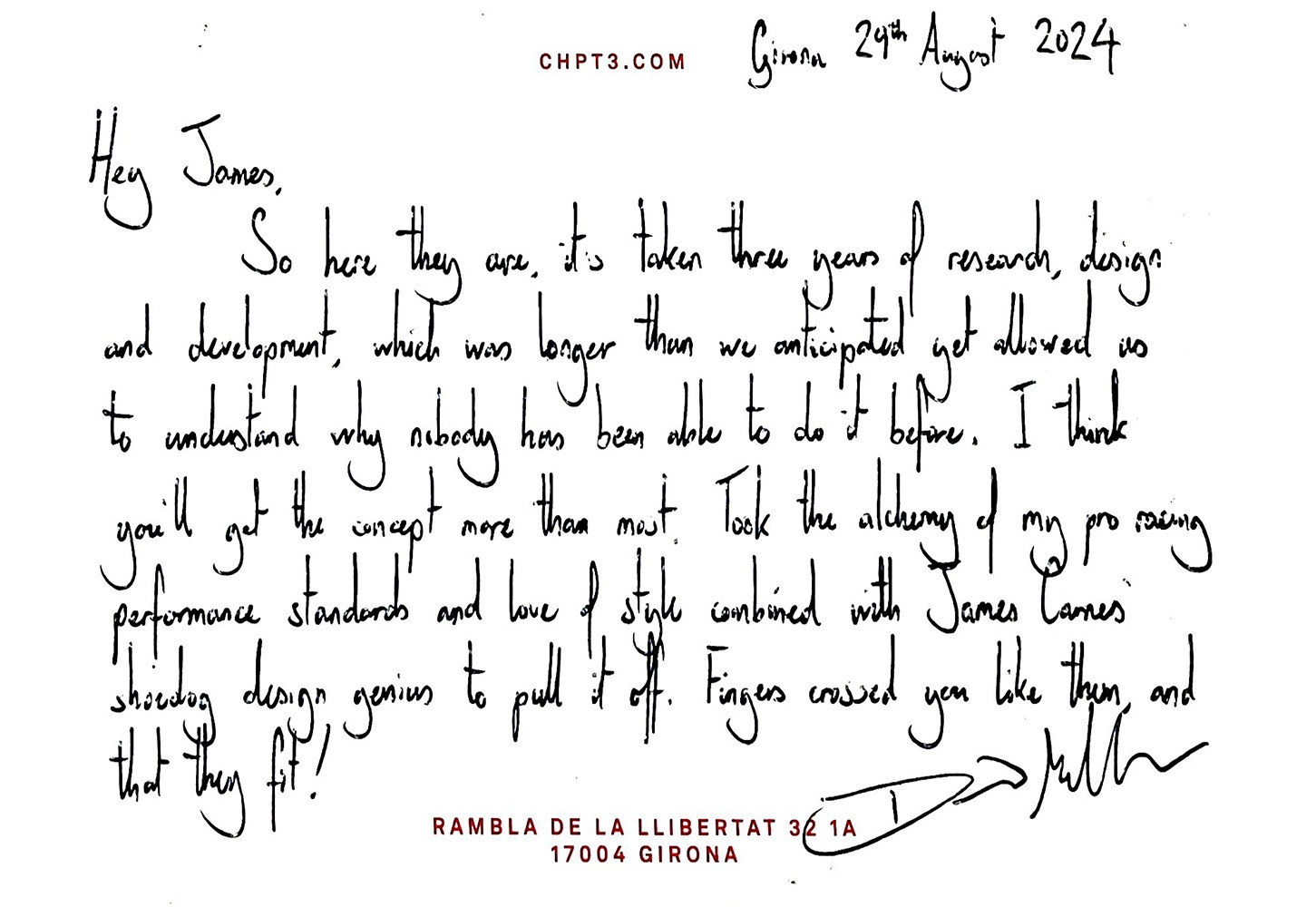
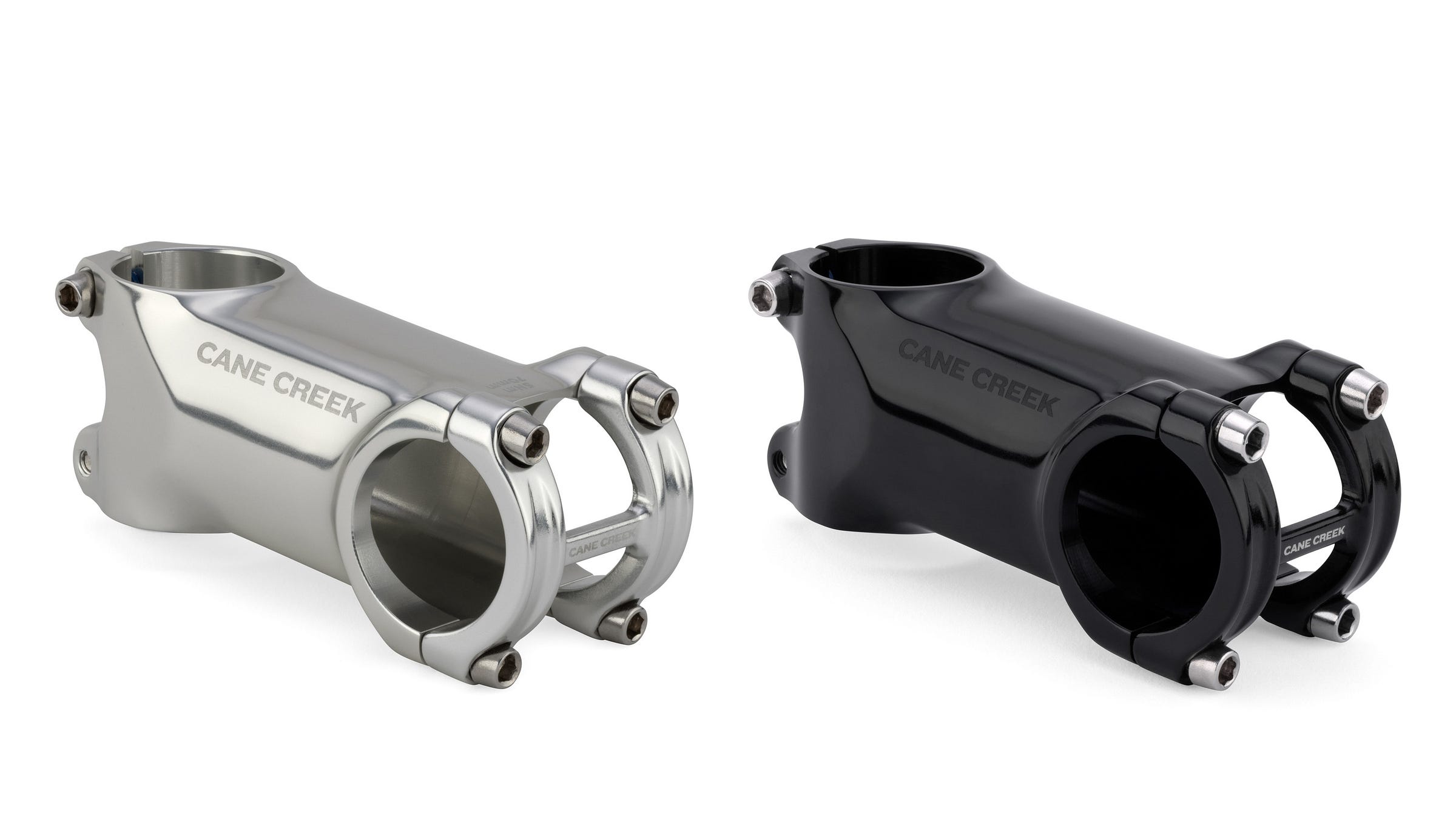
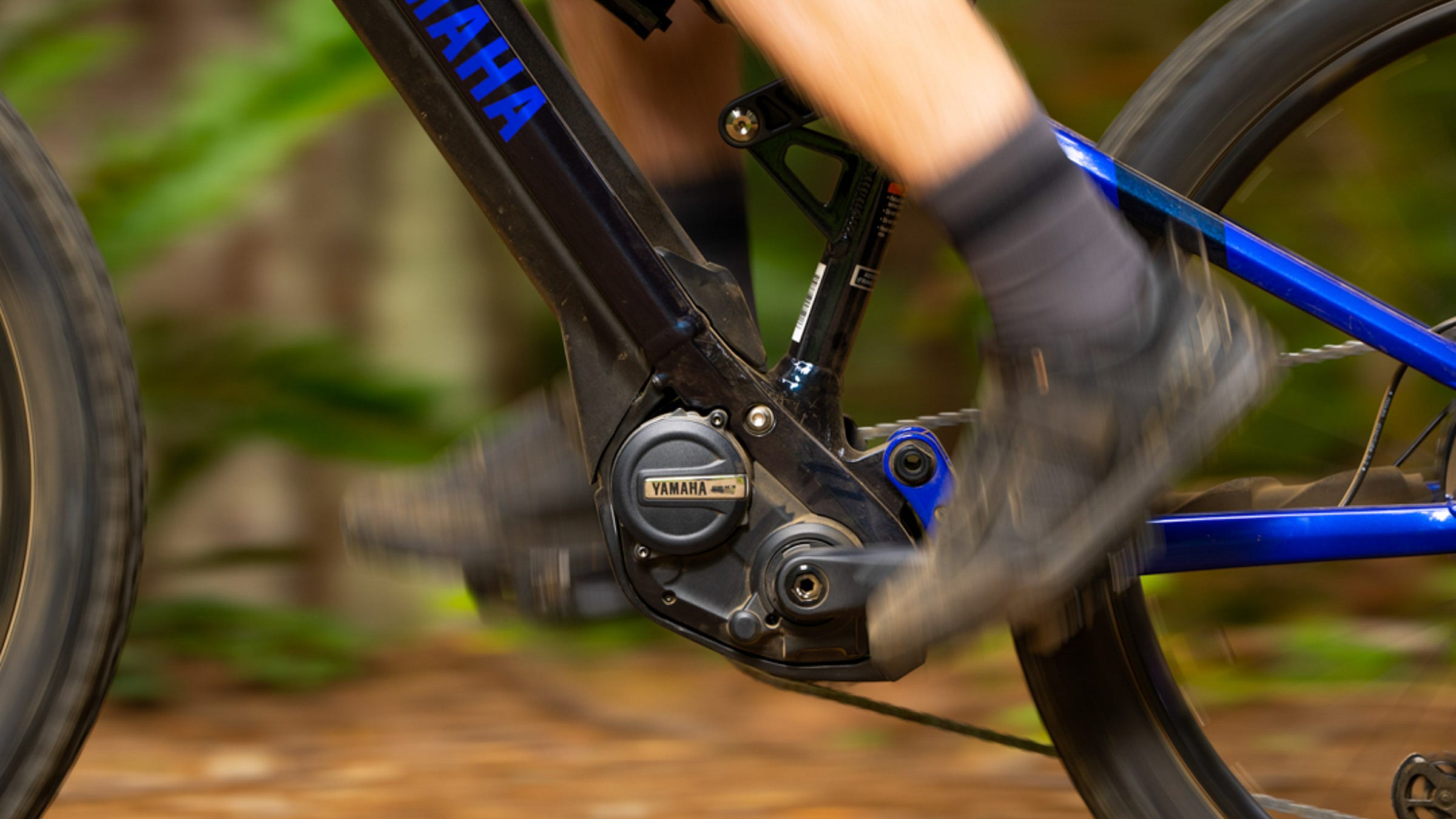
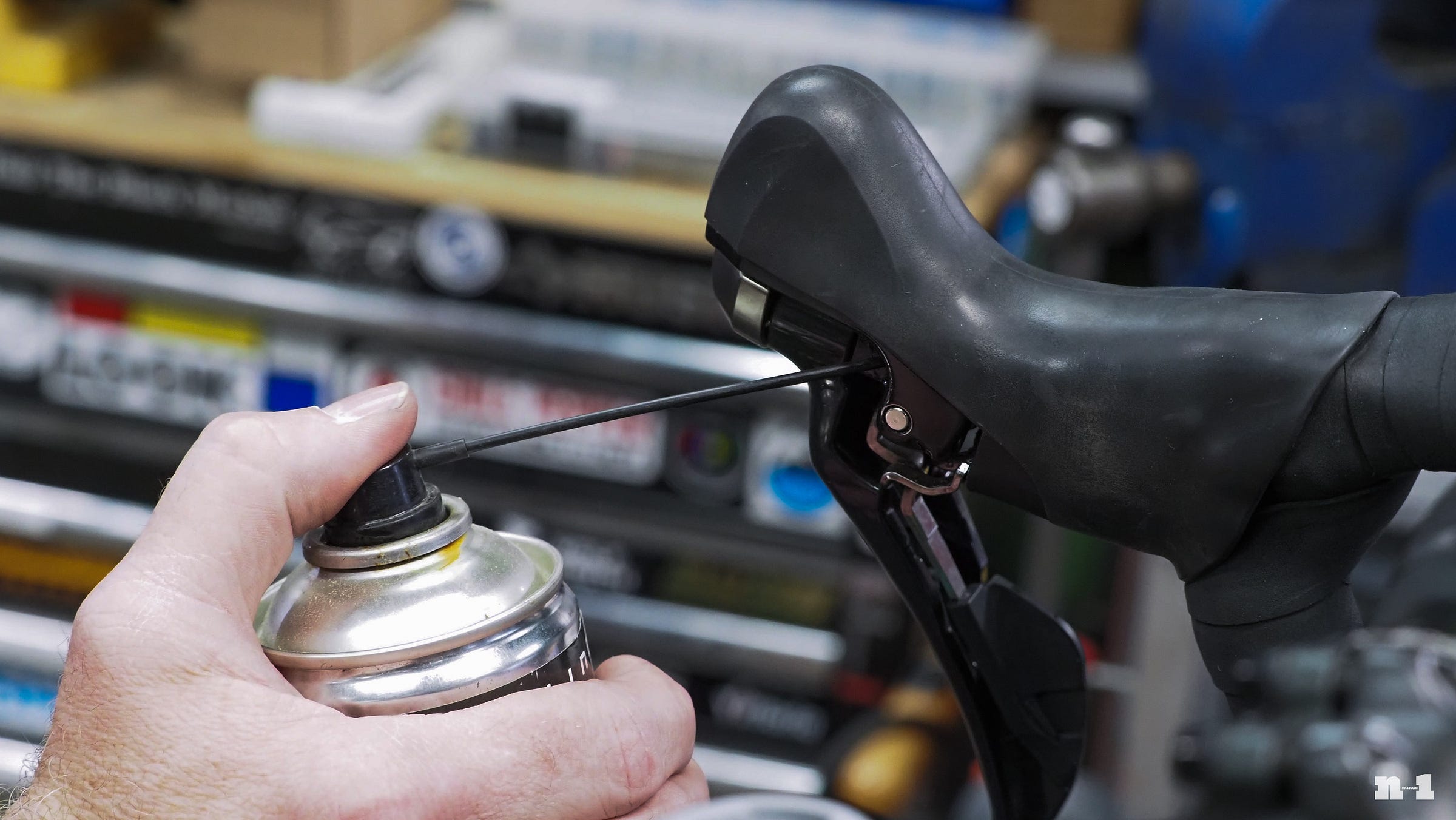
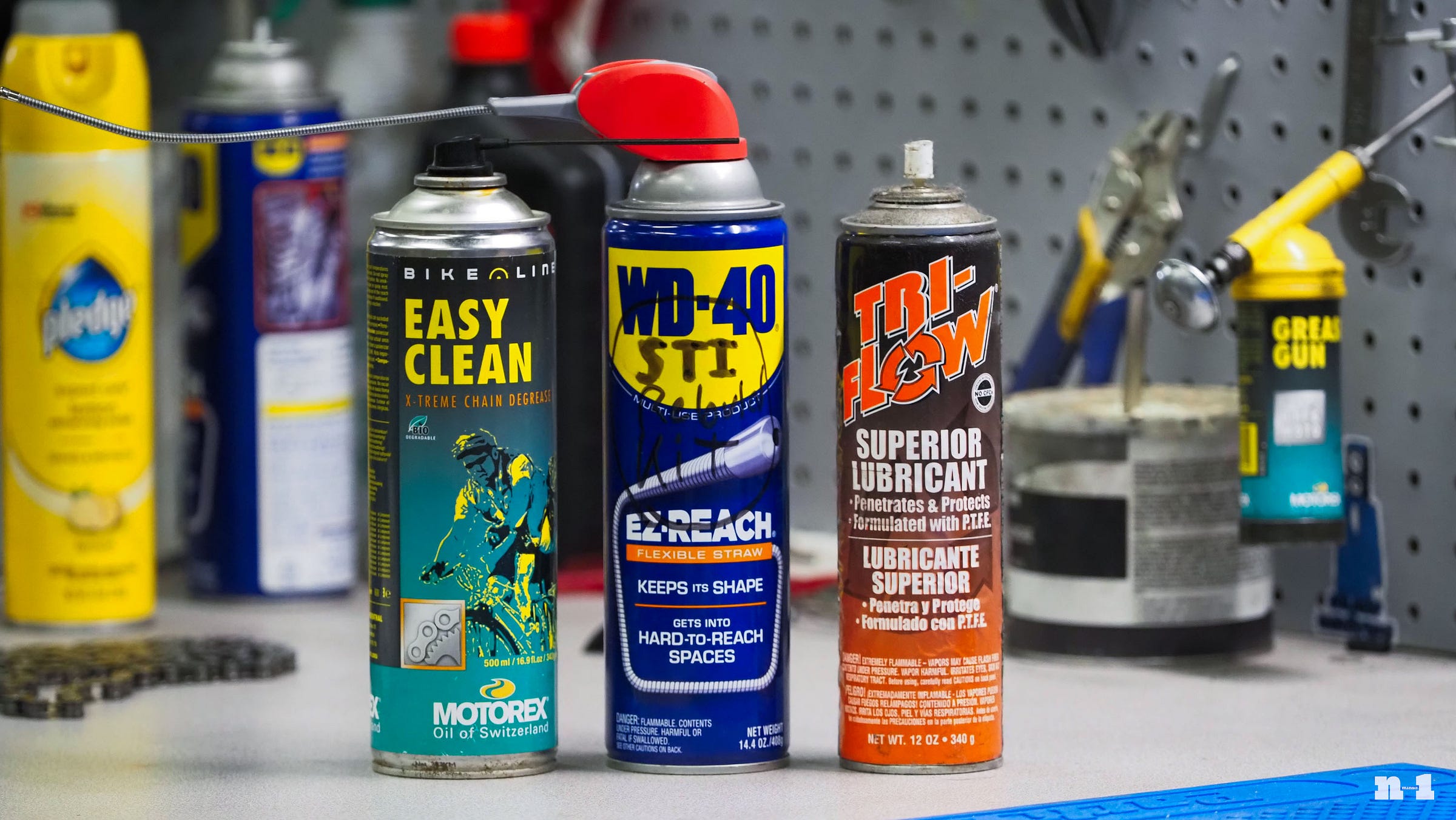
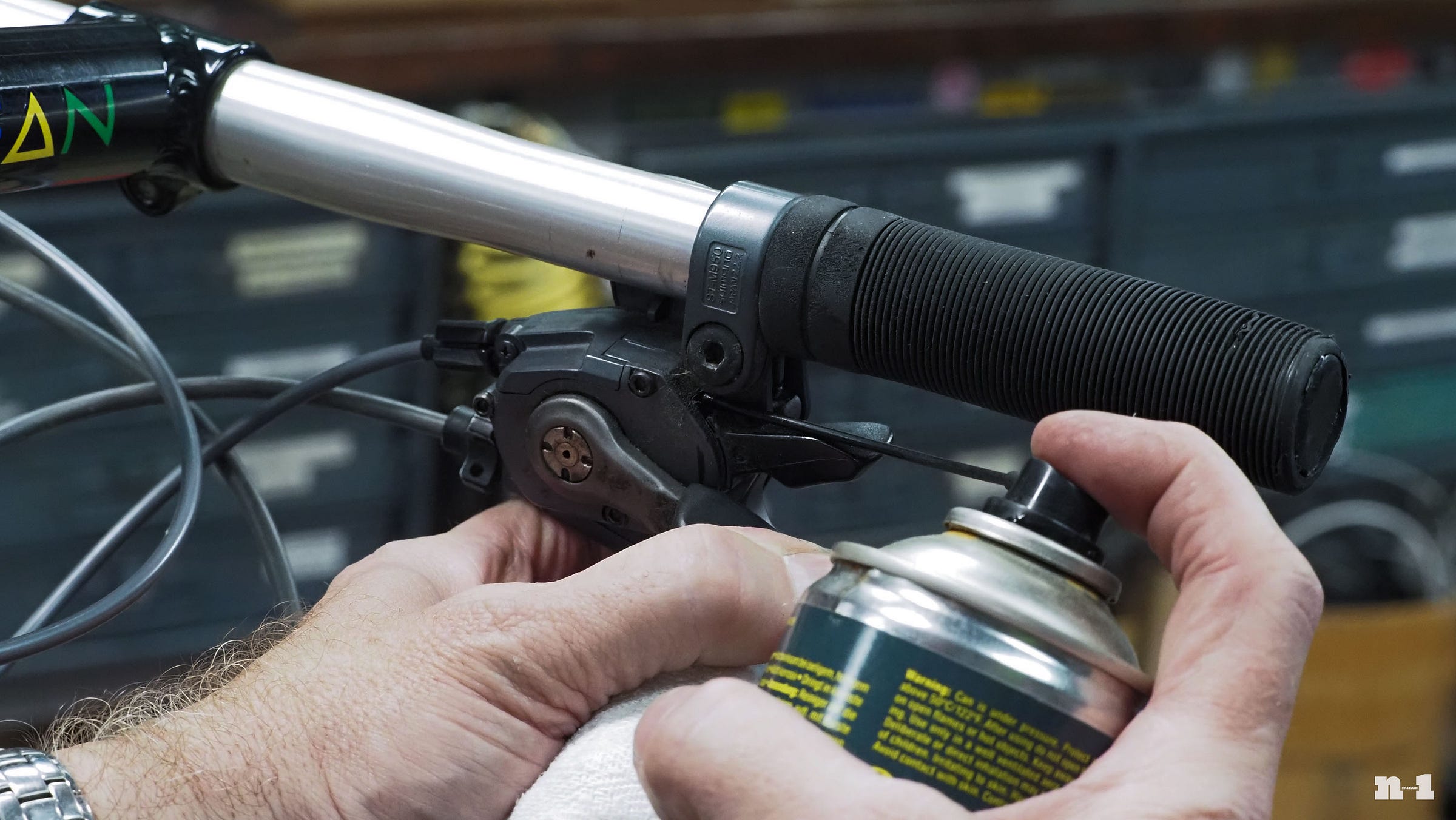
One quick bit of feedback: if you do any future coverage on eyewear, even a brief mention of corrective options that are or aren't available is a pretty essential feature question for some of us. It's not standard practice in most of the review industry but it really should be.
"Sometimes it’s perfectly ok to celebrate the simple things" is such a spot on comment when it comes to so many products. I'd be buying that cane creek stem if I hadn't just ordered a Ritchey. It's simple and clean, just a kind of classic look applied to it.